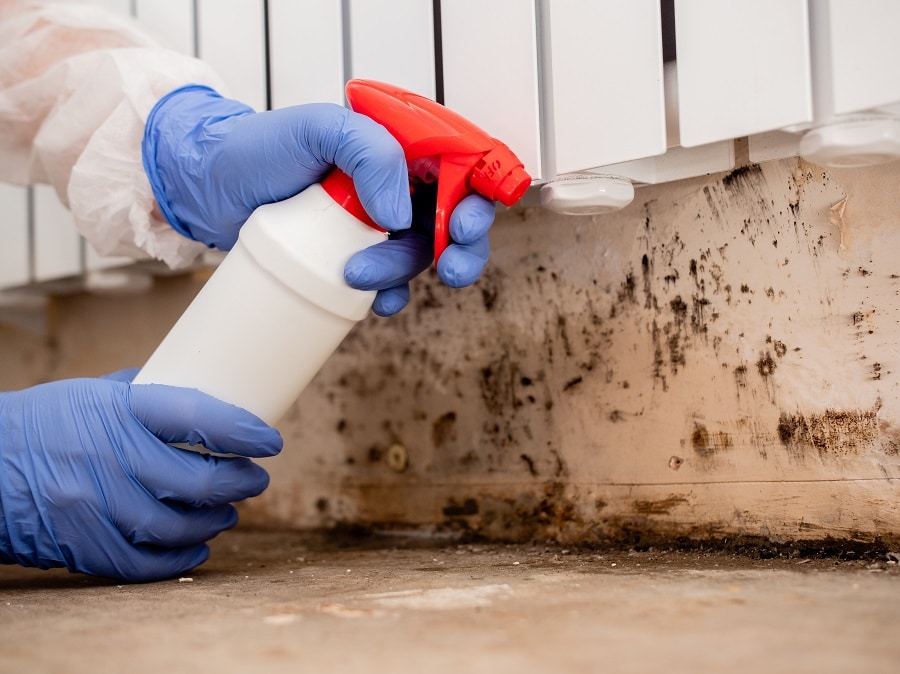What Is Wet Rot?
Wet rot is the natural rotting of wood caused by excessive moisture. It occurs in wood with a moisture content of 30 to 50 per cent, as opposed to dry rot, which occurs in wood with a moisture content of 20 per cent or less.
Wet rot is caused by a fungus attracted to damp wood and feeds on it, eventually destroying it. There are many distinct varieties of wet rot fungus, but the most prevalent is Coniophora Puteana, often known as basement fungus.
Wet rot is less harmful than dry rot since it is limited to a localised wet region and does not spread. However, wet rot can be just as destructive as dry rot and, if left untreated, can seriously weaken structural timbers and lead to significant structural damage.
Typical Causes Of Wet Rot
The first step in effectively dealing with wood rot is to figure out what’s causing it. The most common cause is dampness in the wood. Moisture is ideal for the emergence and growth of fungus that destroys wood. Damaged woods as a result of dry or wet rot are the end outcome. These two wood states can only form and spread if the environmental conditions are ideal for them.
Wet rot spores are drawn to damp wood with high moisture content; therefore it needs a source of moisture to flourish. This moisture source could be caused by various problems, such as faulty plumbing, leaking gutters, leaking roof, broken pipes, leaking washing machine, or a leaking bath or shower tray.
Wet rot thrives in wood that has been exposed to excessive moisture because it causes fungus spores to germinate and proliferate, allowing them to feed on the wood and degrade its structural integrity.
Wet rot can affect any form of wood that is regularly exposed to dampness. A roof leak, burst pipes, a poorly connected washing machine, a leak of any type in the house, and so on are all possible causes. All of these scenarios, as well as others, are likely to cause damp rot.
Wet rot is caused by two species of fungi: Coniophora puteana (black) and Fibroporia Vaillantii (white). Bathrooms, basements, and outbuildings are the most likely areas for wet rot to spread because they provide ideal damp conditions. Although wet rot is less dangerous than dry rot, if left untreated, it can have disastrous repercussions, such as substantial structural damage to your home.
Wet Rot Thriving Conditions
Wood-decaying fungus thrives in damp, suffocating environments with little or no air circulation. “”ow do I know the difference between wet and dry rot?””is one of the most often asked questions.
The answer is quite simple; wet rot only forms in places with high moisture levels.
To thrive and spread, wet rot requires regular moisture exposure. Wet rot can be detected in areas with faulty plumbing, gutters, downpipes, and stone pointing. When a piece of wood is exposed to high levels of moisture for an extended time, fungal spores grow, causing it to lose its strength and integrity, increasing the likelihood of it breaking and causing significant structural damage.
Wet rot is more likely if the moisture level in a space is more than 20%. The higher the moisture content, the more likely wet rot will develop. Rainwater that has accumulated wherever it sshouldn’tbe is often the cause of excessive wetness. Faulty gutters, a broken roof, or gaps in the outside walls can all contribute to this. Wet rot can be considerably reduced if these problems are addressed early on. Wet rot cannot occur in areas where the moisture content is less than 20%.
Wet rot can be caused by a variety of factors, including rising damp and condensation.To summarise, wet rot spores can grow in any type of wood that has been exposed to damp for an extended period of time.
The best way to prevent possible wood rot is to address and fix any damp issues, especially before iit’stoo late.
Roofs And Upper Flooring Decay
Because ground floor timbers are potentially in closer touch with damp soil areas and rising damp, wet rot in upper flooring and roof timbers is less common than wet rot in in-ground floor timbers.
The following are the most prevalent reasons for water penetration into a pproperty’supper levels.
Upper LLevels’Rot Concerns
Long-term water intrusion into your home can be caused by faulty flashing around chimneys. In certain cases, this may not emerge as water staining on the ceilings; therefore it is not visible from the inside. As a result of the water intrusion, the timbers surrounding the chimney may rot. IIt’sa good idea to have your roof evaluated by a roofing specialist once a year.
Slipped tiles can allow water in, creating ideal circumstances for dry rot or wet rot to thrive. If dealt with soon, damp concerns will not appear; nevertheless, if left ignored, rot may occur.
Property owners should be concerned about wet spots or algae growth beneath gutters.
Overflow pipes emerge from the walls of above bathroom floors and central heating systems. These mustn’t drip. Additionally, faulty plumbing might be hidden behind walls and beneath floors. If problems with these pipes are discovered, a plumber should be contacted, and the home dried out.
Differences Between Wet Rot And Dry Rot
Some of the differences between wet rot and dry rot wood-destroying fungus are given below.
Dry Rot Symptoms
- Dry rot causes wood to lose structural strength, and even timber far away from the moist source can be damaged.
- Dry rot causes visible fissures along and across the grain of the wood, and mycelium growth may be visible on the surface.
- When the fungus mycelium is young, it appears white like cotton wool and fades to a grey colour as it ages. It can colonise more wood by growing through the mortar beds of brick walls.
- The fruiting bodies of dry rot produce crimson spore dust.
- Wet rot germinates on damp wood with a moisture content of more than 20%, while dry rot germinates on wet wood with a moisture content of less than 20%.
Wet Rot Symptoms
IIt’sdifficult to identify wet rot because it thrives in dark, poorly ventilated spaces like cellars, lofts, and roofs, as well as under floors, windows, door frames and under steps. The following characteristics distinguish wet rot.
- The wood has dark brown stains.
- Along the grain of the wood, splitting or longitudinal cracking occurs.
- A musty smell, wet odour.
- Wood that is moist to the touch.
- On the wood, a localised fungus is growing.
- The colour of the damaged area is darker than the surrounding wood.
- In addition to a damp, musty smell, the wood has a spongy, squishy feel to it.
- When poked with a screwdriver, the wood quickly caves in.
- When the wood dries, it crumbles and fractures.
- Around the affected region, notably on door and window frames, wood gets bleached.
- Paint that has been damaged or is flaking.
- Shrinkage of the wood.
- Take a knife and drive it into the painted wood if the paint is damaged. The blade should come to a halt after a short distance, but if it penetrates all the way to the handle, this indicates moist rot beneath the paint.
- Strands of mycelium on the wood.
- The fungus ddoesn’tspread.
- In the wood, there is distortion, discolouration, and a loss of strength.
Wet Rot Treatment Approach
A professional should address Wet rot as soon as any of the above symptoms appear, since the longer it is left untreated, the worse it will become and the higher the risk it poses to the structural timbers that keep your home standing.
Factors To Consider When Treating Wet Rot
To treat wet rot and avoid further infestations, a wood rot specialist should perform the following steps:
- Identify the source of the moisture and remove it to determine the reason for the wet rot. The wet rot will stop once the moisture source is gone, as the dampness allows the fungus to feed and grow. Fixing leaking roof tiles, repairing defective plumbing, or replacing the seal in a leaking shower tray are all possibilities.
- Determine the degree of the infestation, the type of fungus, and the form of the decay to expose and analyse the entire extent of the damage.
- All timbers that have been ruined or damaged by the damp rot fungus should be removed.
- To safeguard the wood and avoid a recurrence, repair any damage to neighbouring timbers and treat adjacent timber with a fungicide.
- Replace damaged timbers with new timbers that have been pre-treated with a fungicide to prevent further wet rot degradation once the wet rot has been removed.
Book A Wet Rot Survey – Sussex Damp Experts
It’s essential to call a specialist if you can’t work out what kind of wood rot you have. Our team of wood rot specialists can assist you in correctly identifying the problem and recommending the best course of action.
If your property has a wet rot problem, wet rot treatment and eradication are a specialty of Sussex Damp Experts surveyors. Our team of experts will provide you with a solution that will permanently eliminate damp rot problems in your property.
Trusted And Certified Professionals
We are members of TrustMark and all of our treatments come with a 30 year guarantee. Call immediately on 01273 257 765 for expert guidance or to schedule an inspection of your house by a professional.


